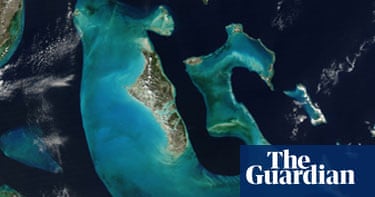“High Revisit” Satellite Imagery
Currently, satellites provide us with a choice: frequent imaging at lower resolution or high-resolution images twice daily at most. Now, companies like DigitalGlobe, which currently owns satellites with cameras that can resolve a book on a coffee table, are working to change that. DigitalGlobe is building “WorldView Legion,” a new chain of satellites that will fill in gaps in their coverage by 2021, allowing them to image regions of the planet every 20 minutes. This is called “high revisit” satellite imagery.
High-revisit satellite imagery has traditionally been mostly confined to smallsat (i.e., satellites usually under 500 kg) companies like Planet. These companies launch cheaper satellites more often, and cover more ground more quickly as a result. Planet captures the full landmass of the Earth at about four meters of resolution daily, using almost two hundred satellites in orbit. The smallsat industry as a whole is poised to launch thousands of additional satellites in the next decade, which will allow them to provide us with something new: images that reveal daily changes to any given spot.
NASA's Aqua satellite analyzed the cloud top temperatures and water vapor content in Hurricane Sally as it crawls toward landfall, and found the potential for large amounts of rainfall, which. Map multiple locations, get transit/walking/driving directions, view live traffic conditions, plan trips, view satellite, aerial and street side imagery. Do more with Bing Maps. Apr 16, 2021 SpaceX eyes building Alaska ground stations for global satellite internet service Posted by Eric Stone Apr 15, 2021 A Ketchikan Public Utilities networking facility sits at the end of Shoup Street in the Saxman area. A hacked up Python version of Satellite Eyes for Windows to set your desktop wallpaper to a map of your current position. You can use maps from OpenStreetMap, Stamen's Watercolor and Toner, MapQuest Open Aerial, or another slippy map tile server.
One way companies like DigitalGlobe and WorldView Legion are working to provide both quality and quantity is by focusing on watching people rather than the entire planet; this means focusing in on the relatively narrow band of latitudes that people inhabit. We want to see what other people are doing: military operations, industrial projects, retail patterns, and social trends are all revealed by watching people, not, for example, weather patterns. This simplifies the problem for satellite companies, which just need enough high-quality coverage of inhabited areas to respond to demand.
However, although the number of satellites trained on the humans of Earth is growing, the number of companies owning the satellites remains relatively small. In fact, “A whopping 74 percent of the [Earth observation] data market was concentrated between three players, namely Digital Globe, Airbus D&S, and MDA—with the rest split between roughly a dozen players, including the likes of Telespazio and Planet,” former Northern Sky analyst Prateep Basu wrote in a report. MDA and DigitalGlobe are now owned by the same company, having recently merged, which means they control more than half of the world’s satellite surveillance market: 54 percent.
“Nowcasting,” not forecasting
The import of ownership in this area becomes clearer when you consider what high-revisit satellite imagery can do. Terrestrial imagery affects more than just your map apps; it also influences national economies and international relations. Satellite companies sell their information to governments, revealing tests of weapons and troop movements. Image analysis software can now tell competing retailers which stores are getting more business based on the number of cars in their parking lots. Anyone who’s interested, from natural resource companies to governments to private prospectors can find out who is digging or drilling where, and how much success they’re having.
On the less nefarious side of things, these images can help civil engineers plan more effectively for disasters, and for preventing them with more effectively engineered measures like levees and dams. Relief organizations can survey disaster and flood zones to strategize about providing aid. Weather organizations and agencies like the NOAA can warn people about which evacuation routes to take during weather emergencies. With this kind of real-time information, which WIRED calls “nowcasting,” we can optimize how we respond to anything from urban traffic to natural disasters. This is what the future of satellites looks like, and it’s almost here.
As a Futurism reader, we invite you join the Singularity Global Community, our parent company’s forum to discuss futuristic science & technology with like-minded people from all over the world. It’s free to join, sign up now!
Black Eye Satellite

Isat Satellite
Share This Article
